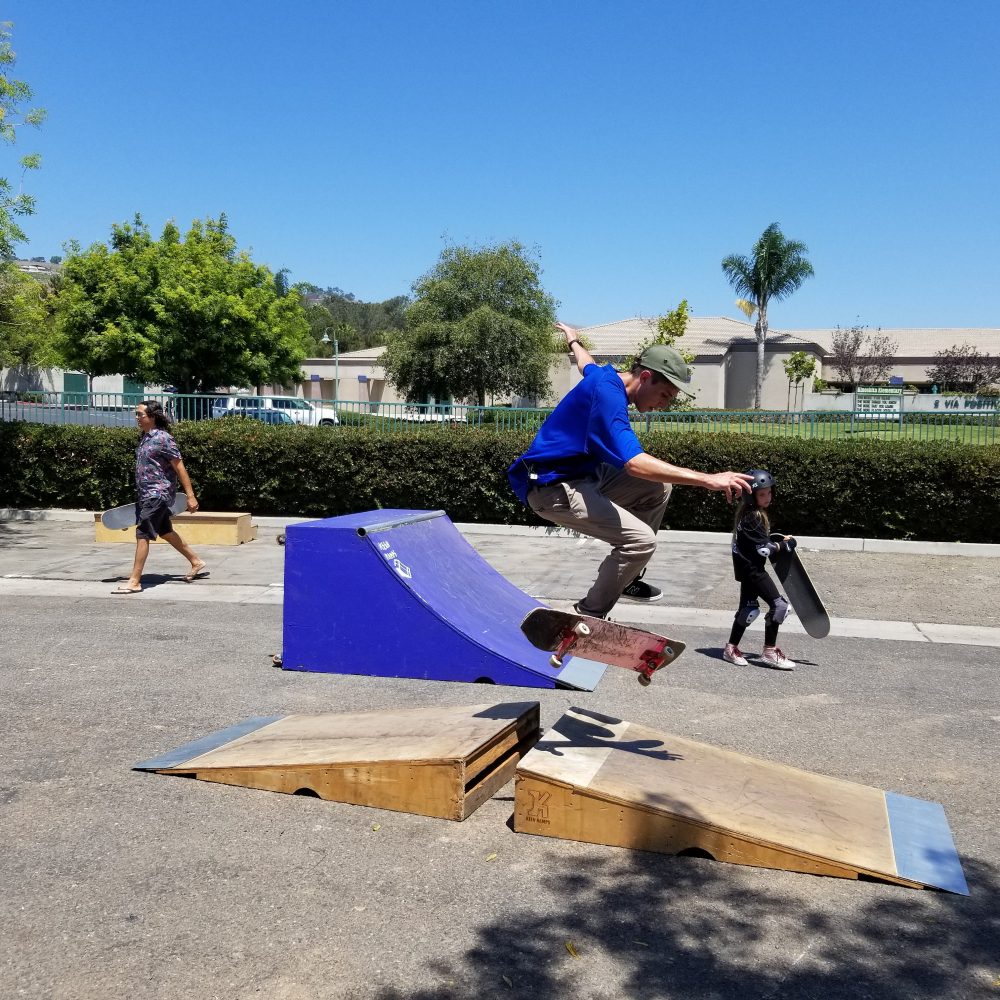
This post was originally published on this site
By Clara Helm
In the last decade, there has been growing interest in having a city skate park for San Juan residents. The city took some of the first steps toward the park’s construction in 2021 when the southwest corner of the city-owned Kinoshita Farm was approved by the City Council for the site location.
Before the skate park’s construction could begin, however, an Environmental Impact Report (EIR) had to be completed by the city to comply with the California Environmental Quality Act (CEQA) and State CEQA Guidelines.
The EIR was released on Aug.17 and is being circulated for the public’s review, with the public comment period closing Oct. 2.
The proposed skate park would become a part of the 28 acre parcel of land, located on Camino del Avion and Alipaz Street, and would be integrated into the city’s Ecology Center active farm, the community center, and the sports park.
The project would be 1.75 acres in size, with approximately 42,575 square feet of recreational space. Within this recreation space would sit a new skate park, playground, restrooms, seating and landscape.
The skate park would include a flow bowl area, a pool bowl area and a street skating area with rails and banks, among other things. The proposed hours of operation for the skate park would be 8 a.m. to sunset, year-round, with an option to extend hours to 10 p.m. in the future.
Outside of the fenced recreation area, there would be a multi-use public trail, spanning 20 feet wide and filtering into the community center and sports fields. The trail would be just less than an acre and would run along the western boundary of the Kinoshita Farm property.
The EIR focused most heavily on four issues that would need to be addressed with the proposed project: loss of farmland, impact on local species, increase in noise level and potential disruption to unique paleontological, geological and archaeological features or resources.
The zoning of the land for the proposed project would have to be changed as the property is underdeveloped land that The Ecology Center uses for agricultural purposes.
To mitigate the loss of agricultural land and comply with its municipal code, the city proposed that it would pay fees toward its Agricultural Preservation Fund.
This payment would be “equivalent to (the) cost of acquisition of Prime Farmland in the region” for 1.75 acres or comparable open space. The funds would then be used for specific uses such as farmland acquisition or agricultural conservation easements.
The EIR states that there is a potentially significant impact through direct harm or through habitat modification on species inhabiting the area. To mitigate this issue the city would complete a nesting bird survey if “vegetation clearing, cutting, or removal activities (are to) be required during the nesting season.”
If a qualified biologist completes the survey and no nests are found, there will be no further steps. But if they find nests used by a native bird for breeding or rearing young, there must be an appropriate buffer placed.
Construction noise when building the park is also a concern for increasing the ambient noise levels in the vicinity. The city plans to reduce potential construction noise by attempting to schedule construction activities so they do not occur simultaneously, having all equipment be fitted with engine exhaust mufflers and shutting off idle engines when not in use.
To further reduce noise levels, they will have the project contractor install, at minimum, a 7-foot temporary noise barrier or other materials that attenuate sound along the project border. At the construction entrances, there will also be construction hours, allowable workdays and the phone number of the job superintendent posted for members of the community to contact if needed.
In the EIR, there was also a highlighted concern about the potentially significant paleontological, geological or archaeological impact the project might have. To reduce this impact if a notable site is found, workers will be briefed before construction about inadvertent discoveries through a presentation and handout, otherwise known as Workers Environmental Awareness Program (WEAP) training.
There will also be professionals consulted during different phases of construction such as an archaeological monitor present for any ground disturbing activities and an Orange County-certified paleontologist to oversee mitigation requirements for excavations below a depth of five feet under the original ground surface.
The EIR also gave alternative plans for the skate park that would lessen some of the significant effects of the project. This includes: not building the project, developing the skate park with a 500-foot setback from Camino Del Avion and developing the skate park at San Juan Capistrano Community Gardens.
While the second alternative would reduce noise levels because of its distance from the street, there would be an issue of accessibility and convenience of the facility.
The third alternative would reduce environmental impacts on agricultural, biological and environmental resources. However, the park would lack amenities such as an onsite restroom and a playground, as well as have a greater construction noise impact on nearby residential areas. The public can provide input on the EIR’s accuracy and completeness until 5 p.m. on Oct. 2, and the comments can be addressed to Ahsley Melchor, the senior management analyst, at the City of San Juan Capistrano, 30448 Rancho Viejo Road, San Juan Capistrano, or via email at amelchor@sanjuancapistrano.org.






